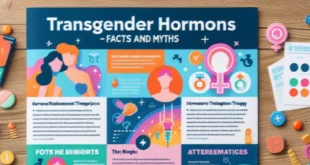Trans men and trans women are individuals who identify as a gender that is different from the one they were assigned at birth. For example, a trans man is someone who was assigned female at birth but identifies as male, while a trans woman is someone who was assigned male at birth but identifies as female.
Both trans men and trans women may choose to undergo hormone therapy and other medical interventions as part of their transition. This can have a number of effects on the body, including changes in hormone levels and the development of secondary sex characteristics such as breast tissue and facial hair.
While there are many similarities between trans men and trans women, there are also some important differences. For example, trans men may experience a deeper voice and increased muscle mass as a result of hormone therapy, while trans women may experience breast development and a decrease in facial and body hair.
Additionally, trans men and trans women may face different challenges and barriers. Trans men may face stigma and discrimination due to their masculine appearance, while trans women may face violence and discrimination due to their feminine appearance.
Overall, it is important to remember that trans men and trans women are individuals who deserve respect and support. They should be treated as the gender they identify as, and not be discriminated against because of their gender identity.
 Lesbian, Gay, Bisexual, Transgender & Intersex News Lesbian News, Gay News, Bisexual News, Transgender News, Intersex News, LGBTI News
Lesbian, Gay, Bisexual, Transgender & Intersex News Lesbian News, Gay News, Bisexual News, Transgender News, Intersex News, LGBTI News




